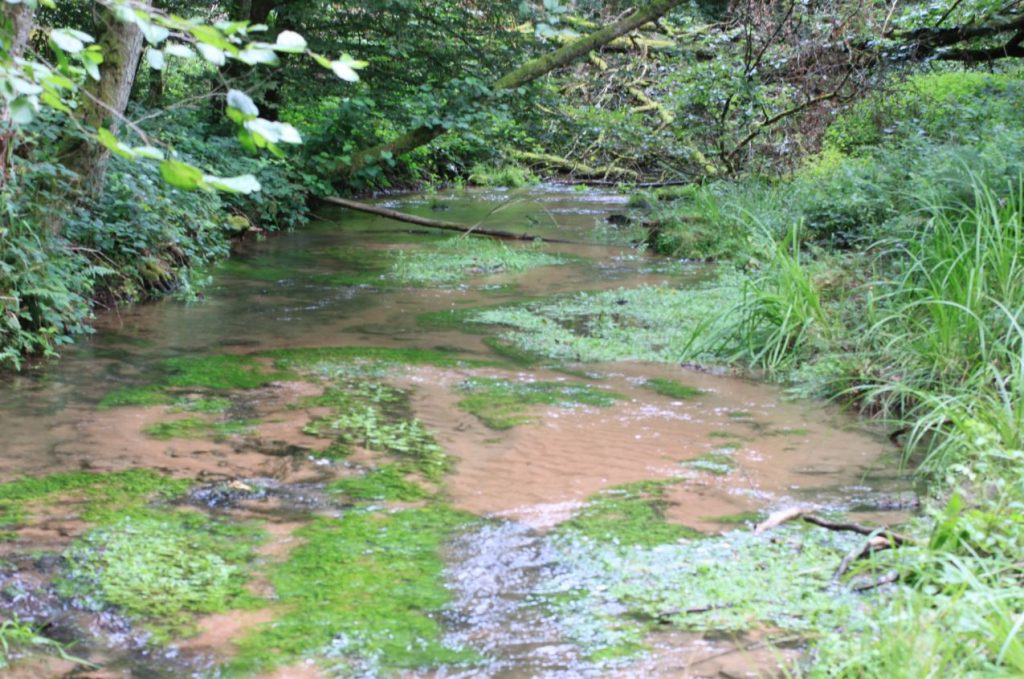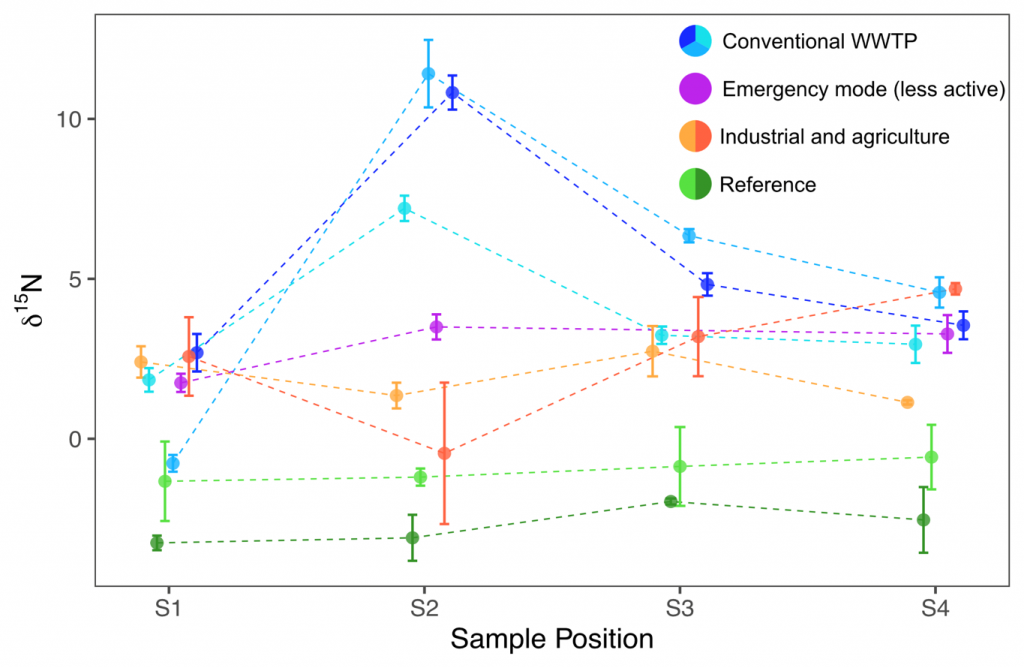This article presents the subproject Water and Climate Regulation of the INTERREG project ecoserv. The subproject further researches the self-purification potential of streams.
The input of anthropogenic substances into streams and rivers can strongly influence them. If too many substances are introduced, negative effects on the water quality and thus on the organisms that inhabit it, become likely. However, water bodies have a certain potential to clean themselves, the so-called self-purification potential. Biofilms in streams, which are usually formed from communities of different microorganisms, can contribute to self-purification capabilities by retaining and metabolizing substances. The subproject Water and Climate Regulation investigated the retention capacity of biofilms and thus the self-purification potential of water bodies.

As part of the project, biofilms in water bodies were sampled and analyzed for their anthropogenic nitrogen (δ15N) content. Samples were taken in streams of the biosphere reserve of Pfälzerwald-Nordvogesen, in areas where nitrogen is discharged by wastewater treatment plants. Sampling took place above, as well as at and below the effluent source. In addition, undisturbed near-natural streams without wastewater treatment plants were sampled as a reference.
The study shows that the proportion of anthropogenic nitrogen in the biofilms at the effluent location is substantially higher than the value upstream. Thereafter, the proportion decreases rapidly. Nevertheless, anthropogenic nitrogen is still detectable in the biofilms more than a kilometer after the effluent location (see graphic). However, this pattern may depend strongly on land use and the type of discharge. Thus, in some cases the trends differ considerably between municipal and industrial discharges or between different land uses (see graphic). The clear influence of wastewater treatment plants on the proportion of anthropogenic nitrogen and the changes in the proportions in the sampled biofilms, visualize the uptake and retention of anthropogenic substances in biofilms. This shows the important contribution of biofilms to the self-purification of water bodies.

If you are interested to see further results on the subproject “Water and Climate Regulation”, then you can look them up at: https://uni-landau.de/eeres/ecoserv-output/
You may also be interested in:
